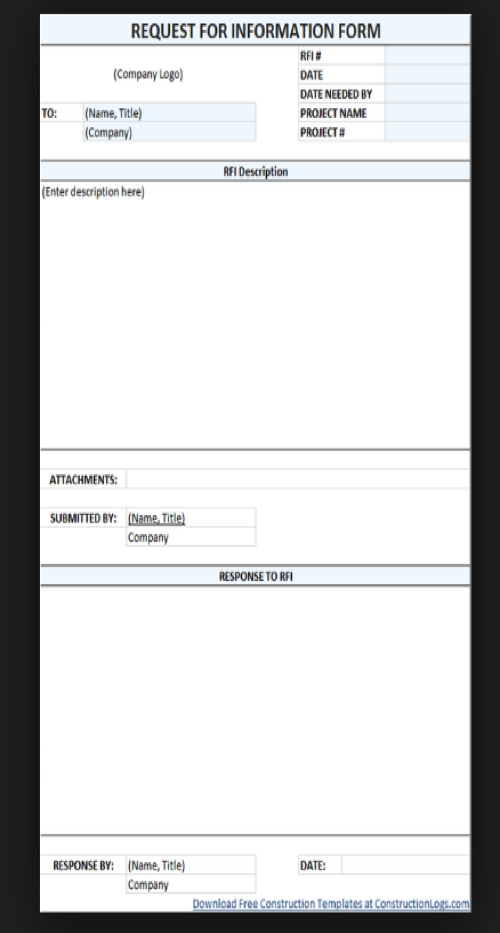Construction RFI ( Request for Information) or sometimes called Technical Query in countries like the UK is an official request form ( often written by a contractor or a subcontractor) that requests for details during the entire lifespan of a construction project starting from the bidding down to the completion stages of a construction project. A contractor RFI is written with the purpose to close any information gaps and clarify any misinformation, but not limited to the following: design drawings, specifications, standards, and contracts.
At this point, RFI’s sound simple in definition, but in RFI’s are anything but simple. RFI’s are time-consuming, detail driven and can cost a lot and take a toll on a company’s bottom line. In a study done by Navigant in an analysis of over 1300 construction projects all over the world that had over 1 million RFI’s found out it cost an average of $1080 per RFI to read, write and respond to.
If it all sounds confusing to you at this point, don’t worry, in the course of this article, we are going to dissect what a rfi is, as well provide some rfi examples so that by the end, you should get a good grasp on what a project RFI is.
Why RFI’s Are Made
Construction RFI’s are usually created as an answer, but not limited to the following reasons:
- To make sure that the involved parties have fully understood the official interpretation and clarify unclear, irrelevant or missing project detail which can come in missing project specifications, a flawed design issue among many things.
- To validate the official decision made by the architect, engineer, or the owner about a project change. This projected change (s) can potentially affect the scope of work and can add to the project costs or can cause liability issues in the future.
An RFI in construction management completed is generally accepted as an official change to the scope of work, unless further approval is needed.
When Not To Use An RFI
Sure, an RFI is a great way make sure that everybody is on the same page when it comes to communication, but you cannot create an RFI for every single thing that happens in the construction. Below are some instances when RFI’s should NOT be made:
- Submitting safety plans and protocols
- Scheduling plan submissions
- General comments on the construction project
- Adding an additional design or engineering elements included in the initial planning and bidding
- Overall review of the construction project
Typical RFI Layout
Every company has their own style and format on how to create an RFI in construction, but a typical RFI will contain the following:
1. Introduction
Any good RFI will start off with a good introduction explaining why the RFI is being written. A good RFI question is typically written in a simple, clear, and concise manner so it can be understood immediately. Good questions lead to good answers.
2. Addressing The Specifics
The bulk of the RFI will contain detailed information to why the request is being made. When in doubt, use the five W’s and 1 H in journalism (Why, When, Who, What, Who, and How). References are included as well as pictures; drawings are usually attached for further clarification.
3. RFI Impact
An RFI will include an estimate on the delays the proposed clarification is expected to create in the project in terms of time and money.
4. Other Information
A good RFI should cover all bases, and a good RFI format will include things like: the time when the recipient is needed to respond, confidentiality clauses among other things. The more information, the better.
RFI Examples
RFI’s come in all forms and sizes, but to give you a general idea on how it looks like, here a couple of screen grabs to show you how RFI’s look like for different companies.





